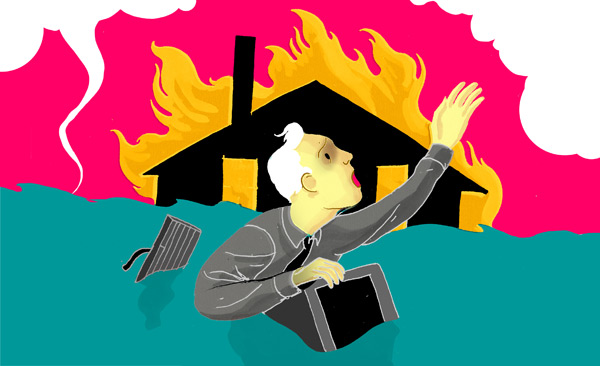 Slate | All of these things have the common feature of low probability and high consequence. They're "black swan" events. They're unpredictable in any practical sense. They're also things that ordinary people probably should not worry about on a daily basis. You can't fear the sun. You can't worry that a rock will fall out of the sky and smash the earth, or that the ground will open up and swallow you like a vitamin. A key element of maintaining one's sanity is knowing how to ignore risks that are highly improbable at any given point in time.
Slate | All of these things have the common feature of low probability and high consequence. They're "black swan" events. They're unpredictable in any practical sense. They're also things that ordinary people probably should not worry about on a daily basis. You can't fear the sun. You can't worry that a rock will fall out of the sky and smash the earth, or that the ground will open up and swallow you like a vitamin. A key element of maintaining one's sanity is knowing how to ignore risks that are highly improbable at any given point in time.And yet in the coming century, these or other black swans will seem to occur with surprising frequency. There are several reasons for this. We have chosen to engineer the planet. We have built vast networks of technology. We have created systems that, in general, work very well, but are still vulnerable to catastrophic failures. It is harder and harder for any one person, institution, or agency to perceive all the interconnected elements of the technological society. Failures can cascade. There are unseen weak points in the network. Small failures can have broad consequences.
Advertisement
Most importantly: We have more people, and more stuff, standing in the way of calamity. We're not suddenly having more earthquakes, but there are now 7 billion of us, a majority living in cities. In 1800, only Beijing could count a million inhabitants, but at last count there were 381 cities with at least 1 million people. Many are "megacities" in seismically hazardous places—Mexico City, Caracas, Tehran, and Kathmandu being among those with a lethal combination of weak infrastructure (unreinforced masonry buildings) and a shaky foundation.
Natural disasters will increasingly be accompanied by technological crises—and the other way around. In March, the Japan earthquake triggered the Fukushima Daiichi nuclear power plant meltdown. Last year, a technological failure on the Deepwater Horizon drilling rig in the Gulf of Mexico led to the environmental crisis of the oil spill. (I chronicle the Deepwater Horizon blowout and the ensuing crisis management in a new book: A Hole at the Bottom of the Sea: The Race to Kill the BP Oil Gusher.)
In both the Deepwater Horizon and Fukushima disasters, the safety systems weren't nearly as robust as the industries believed. In these technological accidents, there are hidden pathways for the gremlins to infiltrate the operation. In the case of Deepwater Horizon, a series of decisions by BP and its contractors led to a loss of well control—the initial blowout. The massive blowout preventer on the sea floor was equipped with a pair of pinchers known as blind shear rams. They were supposed to cut the drillpipe and shear the well. The forensic investigation indicated that the initial eruption of gas buckled the pipe and prevented the blind shear rams from getting a clean bite on it. So the "backup" plan—cut the pipe—was effectively eliminated in the initial event, the loss of well control.
Fukushima also had a backup plan that wasn't far enough back. The nuclear power plant had backup generators in case the grid went down. But the generators were on low ground, and were blasted by the tsunami. Without electricity, the power company had no way to cool the nuclear fuel rods. In a sense, it was a very simple problem: a power outage. Some modern reactors coming online have passive cooling systems for backups—they rely on gravity and evaporation to circulate the cooling water. Fist tap Nana.


0 comments:
Post a Comment